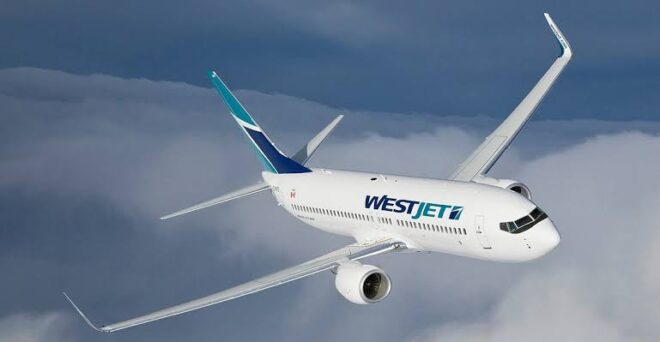
WestJet, one of Canada’s largest airlines, has been pushing for international expansion as part of its growth strategy, but recent internal challenges threaten to derail these ambitious plans. The airline’s goal to extend its global footprint is being hindered by labor disputes, leadership changes, and public scrutiny over service quality and accessibility issues. As the airline navigates these obstacles, the future of its expansion plans has come into question, leaving stakeholders uncertain about its long-term trajectory.
A Vision of International Growth
WestJet has long been recognized for its focus on domestic and transborder flights within North America. However, in recent years, the airline has sought to expand its global reach by adding international routes to destinations in Europe, South America, and beyond. This strategy was designed to position WestJet as a formidable competitor in the global aviation market, providing Canadian travelers with more options for long-haul flights and challenging its main rival, Air Canada, on international routes.
The airline’s expansion began in earnest in 2019 with the introduction of its first Boeing 787 Dreamliner, which enabled it to offer non-stop flights to destinations like London, Paris, and Dublin. In 2024, WestJet announced plans to further increase its international capacity, adding routes to cities such as Amsterdam, Barcelona, and Rio de Janeiro. These moves were seen as critical steps toward transforming WestJet into a full-service global airline capable of competing with established international carriers.
However, as 2024 progressed, WestJet’s internal challenges began to cast doubt on the feasibility of these expansion plans.
Labor Disputes Cast a Shadow
One of the most significant threats to WestJet’s expansion comes from ongoing labor disputes, particularly with its unionized mechanics. In May 2024, the airline issued a 72-hour lockout notice to its mechanics, represented by the Aircraft Mechanics Fraternal Association (AMFA), after negotiations over wages and working conditions stalled. The mechanics’ union had been seeking better pay and benefits, arguing that WestJet’s offer of a 20% cumulative wage increase over several years did not go far enough to address the rising cost of living and industry standards.
The threat of a lockout raised concerns about the airline’s ability to maintain its fleet, particularly as it sought to ramp up international operations. WestJet’s Boeing 787 Dreamliners, which are critical to its long-haul routes, require specialized maintenance that cannot be easily outsourced or delayed. A prolonged labor dispute could lead to operational disruptions, flight cancellations, and delays, potentially undermining the airline’s reputation among international travelers.
In addition to the mechanics’ dispute, WestJet has also faced unrest from its pilots and flight attendants in recent years. While the airline has managed to avoid major strikes, the ongoing tension between management and labor groups has created an atmosphere of uncertainty, both for employees and passengers. Labor instability could not only affect day-to-day operations but also complicate the airline’s efforts to expand internationally, as it risks losing the trust of key personnel needed to support growth.
Leadership Challenges and a Shifting Focus
WestJet’s leadership has also been in flux, adding another layer of complexity to its expansion plans. In October 2024, Alexis von Hoensbroech, the airline’s CEO, resigned following a series of high-profile controversies and operational challenges. Von Hoensbroech, who had been at the helm since 2022, was brought in to lead WestJet’s post-pandemic recovery and drive its international expansion. However, his tenure was marked by internal strife, including labor disputes and public backlash over the airline’s treatment of passengers with disabilities.
Von Hoensbroech’s departure has left a leadership vacuum at a critical time for the airline. The search for a new CEO is expected to take months, during which time WestJet will be led by interim executives. This period of transition could delay important strategic decisions related to the airline’s international growth, as the new leadership team may need time to reassess the company’s priorities and realign its goals.
Industry analysts have suggested that WestJet’s expansion plans may take a backseat to resolving internal issues and stabilizing its domestic operations. The airline’s focus on international growth has, at times, been perceived as a distraction from its core business of serving domestic and transborder markets. Some observers believe that WestJet should concentrate on improving its customer service, resolving labor disputes, and enhancing its operational efficiency before attempting to expand further into the global market.
Accessibility Issues and Public Relations Challenges
Another major hurdle for WestJet’s expansion plans has been the public relations fallout from its handling of accessibility issues. In late 2023, the airline came under fire for its treatment of Sarah Morris-Probert, a Paralympian and president of BC Adaptive Snow Sports, who was forced to crawl up the stairs to board a WestJet flight after staff failed to provide the necessary accessibility equipment. The incident, which went viral on social media, highlighted systemic issues within the airline’s service protocols for passengers with disabilities.

The backlash from this incident damaged WestJet’s public image, particularly among disabled travelers and advocacy groups. While the airline issued an apology and pledged to improve its accessibility measures, the damage had already been done. The controversy raised questions about WestJet’s ability to provide high-quality service on a global scale, where standards for accessibility are increasingly important.
As WestJet looks to expand internationally, it will need to ensure that its service standards meet the expectations of travelers from diverse backgrounds and needs. Failure to do so could harm its reputation in new markets, where competition is fierce, and customers are more discerning about the level of service they receive.
Financial Pressures and Competitive Landscape
In addition to internal challenges, WestJet faces external pressures from competitors and the broader aviation industry. Air Canada, WestJet’s primary rival, has long dominated the international travel market in Canada, offering a more extensive global network and partnerships with international airlines. WestJet’s efforts to break into this space have been met with stiff competition, as Air Canada has continued to expand its own international routes and strengthen its alliances through the Star Alliance network.
Financially, WestJet’s expansion plans come at a time when the airline industry is still recovering from the impact of the COVID-19 pandemic. Although travel demand has rebounded in 2024, rising fuel costs, inflation, and economic uncertainty have created a challenging environment for airlines seeking to grow. WestJet, like many other carriers, has faced higher operational costs, which could impact its ability to invest in new routes, aircraft, and services.
Moreover, the airline’s financial health has been closely tied to its domestic and regional operations, which have been affected by labor disputes and service disruptions. If WestJet is unable to resolve these issues and stabilize its core business, it may struggle to generate the necessary revenue and resources to support its international ambitions.
The Road Ahead
As WestJet navigates these internal and external challenges, the future of its expansion plans remains uncertain. While the airline has made significant strides in positioning itself as a global player, its ability to sustain this growth will depend on its ability to resolve labor disputes, restore leadership stability, and rebuild its public image.
In the short term, WestJet may need to scale back its expansion efforts and focus on addressing the operational and service issues that have plagued it in recent months. This could involve renegotiating labor contracts, investing in employee training, and improving its accessibility measures to ensure that it can meet the needs of all passengers. Only once these internal issues are resolved will WestJet be in a position to fully realize its international growth ambitions.
For now, the airline’s expansion plans are in jeopardy, and the path forward will require careful navigation through a complex landscape of challenges. Whether WestJet can overcome these obstacles and emerge as a stronger, more competitive airline on the global stage remains to be seen.